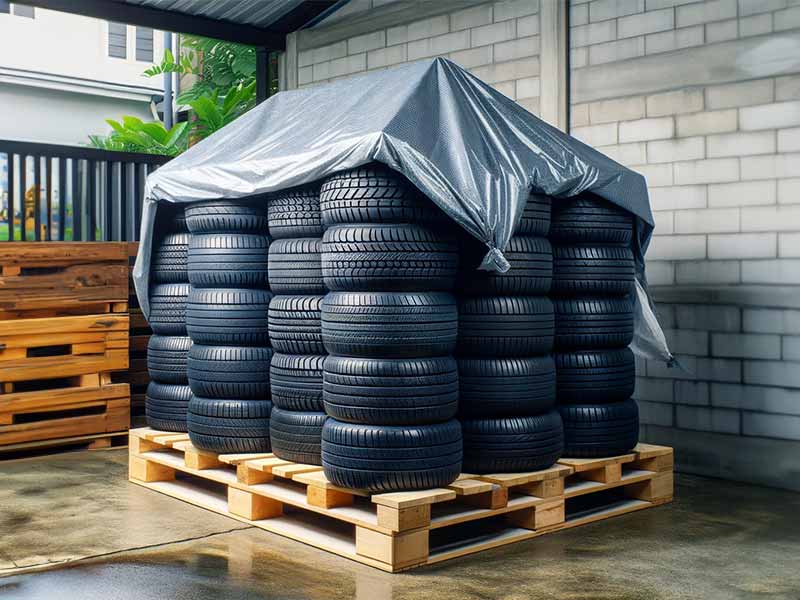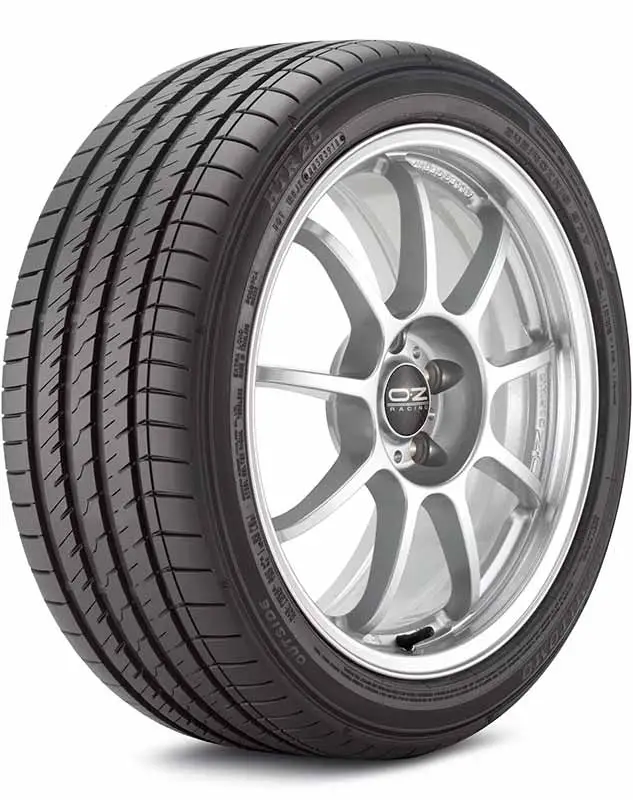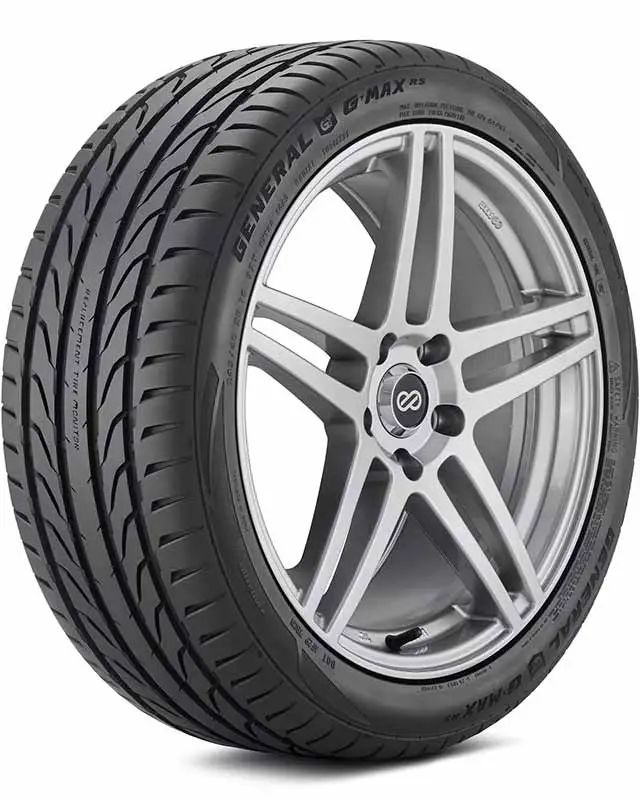Are you staring at a set of tires, wondering how to keep them in shape while they’re not on the road? Whether it’s the end of the season or you’re switching out tires for a different type, knowing how to store your tires outside properly is crucial.
How To Store Tires Outside
To store tires outside properly, ensure they are clean, dry, and placed on a protective surface away from direct sunlight and extreme temperatures. Cover them with a breathable, waterproof material to protect from the elements.
In this article, we’ll walk you through the steps to prep your tires for storage, choose an ideal location, position and protect them correctly, and maintain them throughout their hibernation period.
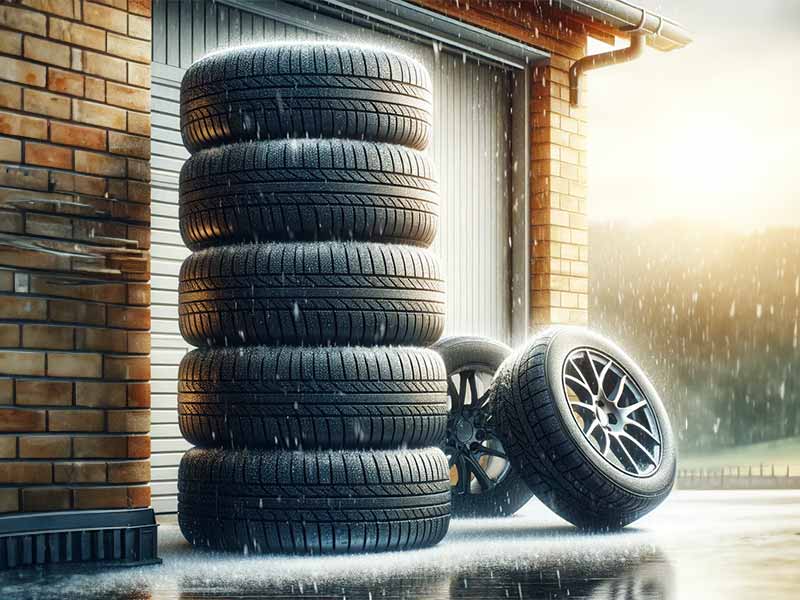
Tire Storage In Winter Or Summer
Storing tires might not be the most glamorous part of car maintenance, but get it right, and you’re ensuring a longer life and better performance from your rubber companions. Let’s break down what proper tire storage means and the risks of getting it wrong.
What Is Proper Tire Storage?
Proper tire storage is about keeping your tires in a condition that maximizes their lifespan and maintains their performance for when you need them back on the road. It involves:
- Protecting the tires from environmental damage: Sunlight, heat, and moisture are the main enemies here.
- Maintaining the shape of the tire: Ensuring tires don’t deform or develop flat spots.
- Preserving the tire material: Rubber can deteriorate over time if not cared for properly.
The Risks of Improper Storage
Not storing your tires correctly can lead to several issues:
- Premature Wear and Tear: Tires can age and wear down faster, leading to a shorter usable life.
- Deformation: Tires can develop flat spots or become misshapen, affecting the ride quality and safety.
- Cracking and Dry Rot: Exposure to the elements can cause the rubber to break down, leading to cracks and brittleness.
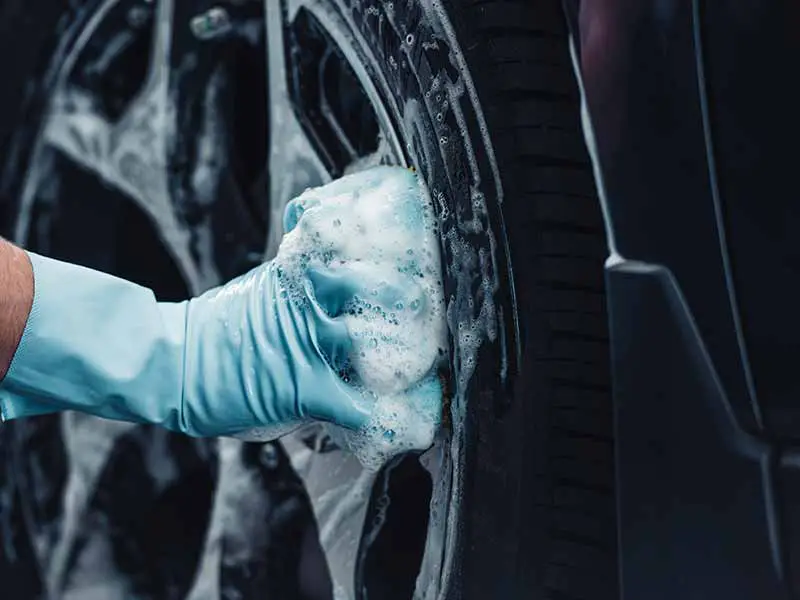
Preparation for Storage
Before you tuck your tires away for a season or longer, a little prep work is necessary. This isn’t just about finding a spot and stacking them up; it’s about ensuring they’re clean, inspected, and aired just right.
Cleaning the Tires
Start with a clean slate, or in this case, a clean tire. Here’s why and how:
- Remove Dirt and Grime: Dirt can hold moisture against the rubber, leading to deterioration.
- How to Clean:
- Rinse with Water: Remove loose dirt and mud.
- Scrub with Mild Soap: Get into the nooks and crannies to ensure all grime is gone.
- Dry Thoroughly: Before storage, ensure they’re completely dry to avoid any mold or mildew formation.
Checking for Damage
A quick inspection can save you from future headaches. Look for:
- Cuts, Cracks, and Bulges: Signs of damage or weakness in the tire.
- Foreign Objects: Remove any nails or debris lodged in the tread.
- Even Wear: Uneven wear might indicate issues when you put them back on your vehicle.
Air Pressure Adjustment
Right before storage, adjust the tire pressure:
- Check Manufacturer’s Recommendations: Some suggest inflating to normal pressure, while others recommend slightly overinflating for storage.
- Avoid Underinflation: This can lead to flat spots or shape loss over time.

Tires Storage Bag
Choosing the Right Location
When it comes to storing tires, not just any old spot will do. The right location can mean the difference between tires that last and tires that let you down. Let’s navigate the dos and don’ts of picking the perfect outdoor storage spot for your tires.
Criteria for an Ideal Outdoor Storage Location
Selecting the right spot involves understanding what tires need most: protection from elements that can age them prematurely. Here’s what to look for:
- Cool and Dry: Tires love cool, not cold, temperatures and low humidity.
- Away from Direct Sunlight: UV rays can degrade rubber over time, leading to cracks and brittleness.
- Away from Ozone Sources: Electric motors and generators can produce ozone, which is harmful to rubber.
Mitigating Outdoor Storage Drawbacks
Sometimes, storing tires outdoors is your only option. Here’s how to make the best of it:
- Use a Protective Cover: A breathable, waterproof cover can shield tires from sunlight, rain, and snow.
- Elevate Off the Ground: Placing tires on a rack or pallet can prevent moisture from the ground and improve air circulation.
- Regular Check-Ups: Even in storage, tires benefit from occasional attention. Check for water pooling, critter nests, or other issues.
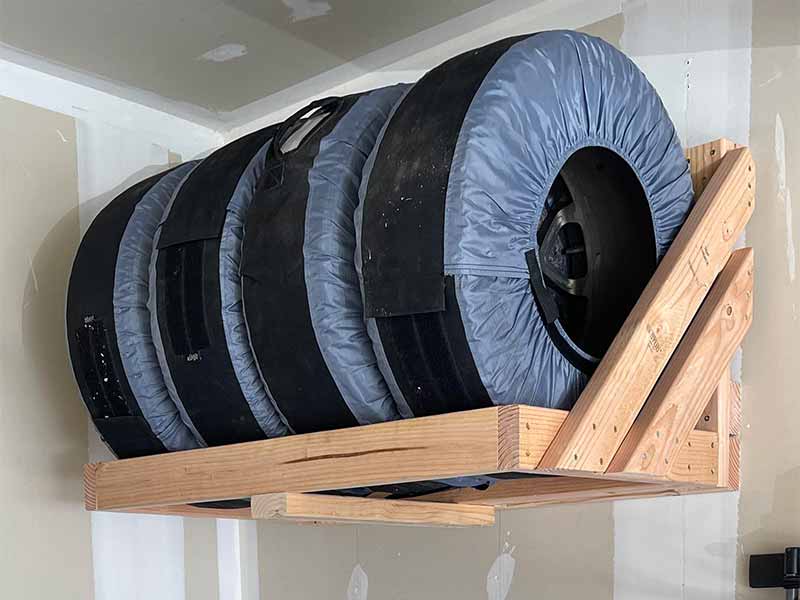
Proper Positioning and Placement of Tires
Once you’ve got the perfect outdoor spot, it’s time to place your tires correctly. Proper positioning is vital to maintaining the tire’s shape and integrity throughout its storage period. Let’s roll through the best practices for tire stacking and protection.
How to Stack Tires
Tires can be stored vertically or horizontally, but there’s a right way to do both:
- Vertical Stacking (Standing Up):
- Rotate Occasionally: Prevents the tires from developing flat spots.
- Avoid Stacking Too High: Keeps the stack stable and prevents deformation of the bottom tires.
- Horizontal Stacking (Laying Flat):
- Use a Flat Surface: Ensures even pressure distribution.
- Don’t Stack Too Many: Like vertical stacking, too many can lead to deformation of the tires at the bottom.
Covering and Protecting Tires
Even in the best outdoor spot, tires need a little extra protection:
- Use Tire Bags or Covers: Specifically designed for tire storage, these covers protect against UV rays, dirt, and moisture.
- Ensure Proper Ventilation: Trapped moisture can lead to mold or mildew, so make sure the cover allows for some air circulation.
Tips for Long-Term Outdoor Storage
If you’re looking at storing tires outside for a long period, here are some additional pointers:
- Rotate Your Tires in Storage: Every few months, give them a turn to prevent flat spots and uneven aging.
- Check On Them Periodically: A quick look can catch any issues early, like water collection or critter damage.
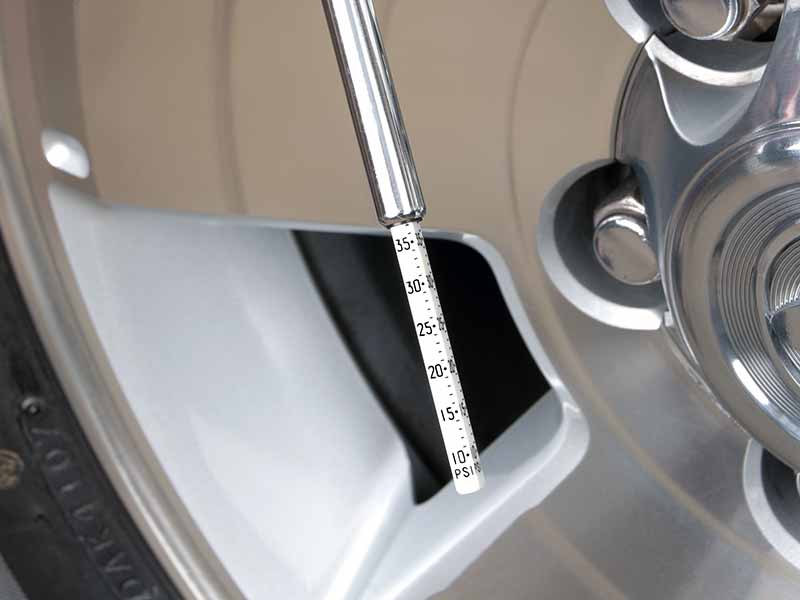
Regular Maintenance While in Storage
Even while resting, your tires need a bit of care to ensure they remain in prime condition for their next journey. Regular maintenance while they’re stored can prevent many common storage-related issues. Here’s how to keep your tires in peak shape throughout their storage period.
Inspection Schedule
Setting a regular schedule to check on your tires can prevent small issues from becoming big problems:
- Frequency: Aim to check on your stored tires at least once every month.
- What to Look For: Check for any signs of damage, moisture accumulation, or infestation.
Rotation and Repositioning
Tires in storage can develop flat spots or uneven aging if left in one position too long. Here’s how to keep them evenly preserved:
- Rotate Vertically Stored Tires: Turn them a quarter every few weeks to distribute pressure evenly.
- Reposition Horizontally Stacked Tires: Move the bottom tires to the top and vice versa to prevent deformation.
Monitoring Environmental Changes
Changes in weather and temperature can affect tire storage conditions. Keep an eye out for:
- Temperature Fluctuations: Extreme changes can affect tire pressure and material integrity.
- Moisture Levels: Increased humidity can lead to mold or deterioration.
Resources
Below are some links you may find helpful when learning about tires:
Final Thoughts
With the right preparation, location, positioning, and regular maintenance, you can significantly extend the life of your tires and ensure they’re ready to roll when you are.
The key to longevity is not just about where you store them, but how you store them. Properly stored tires mean a safer and more efficient drive when it’s time to hit the road again.
Good luck and happy motoring.
